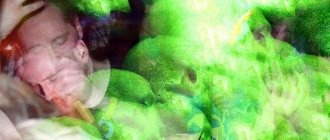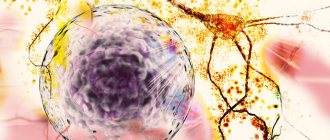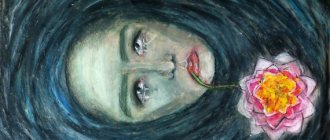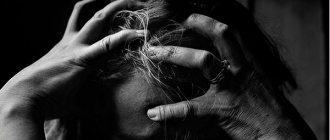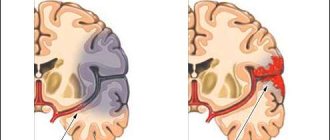Causes of development of mental disorder
The state of confusion develops against the background of organic or functional changes in the brain. Twilight disorder often accompanies epilepsy, which is associated with a disorder in the structure of certain groups of nerve cells. In addition to epileptic changes, intracerebral tumors, traumatic brain injuries, neuroinfections, etc. can be a provoking factor. Among the functional causes are hysterical psychosis and traumatic events that are unexpected for the patient.
Symptoms more often occur in adulthood, since these causes are observed less frequently in children. With hysteria and early manifestations of epilepsy, confusion may develop in children. A psychiatrist deals with the diagnosis and treatment of the disease, regardless of the patient’s age.
Amentia
With this type of darkness, a person is confused, helpless, he does not comprehend the events taking place and is deeply disoriented in place, time and even his own personality. There is a pronounced disintegration of all components of thinking, the process of analysis and synthesis is disrupted, and self-awareness disintegrates. Hallucinatory and delusional disorders are fragmentary and in this case do not determine the patient’s behavior.
Speech production is increased. Statements mainly consist of individual incoherent words, but at the same time their content corresponds to the existing affect. The mood is unstable, the patient experiences alternating states of enthusiasm and tearfulness. Quite clearly defined episodes of low mood with classic psychomotor signs of depressive syndrome are possible.

The behavior is characterized by agitation in the bed, which sometimes resembles catatonic and for a short time can be replaced by a substuporous state. Movements are unfocused, inconsistent, and often sweeping. Revitalization of fine motor skills is not typical.
Amental stupefaction is a profound disorder of consciousness and can last up to several weeks. There are no periods of lucidity, but in the evening and at night, amentia is often replaced by transient delirium. After emerging from the state of stupefaction, the patient becomes completely amnesic of both his experiences and the events of the surrounding world.
Varieties of the condition
In psychiatry, there are several variants of twilight stupefaction, which depends on the reasons that caused it:
- psychotic – develops against the background of hysterical psychosis and other changes in the mental sphere of a person,
- non-psychotic – associated with organic pathologies of the structures of the central nervous system.
Symptoms are heterogeneous. Depending on the predominant clinical manifestations, the following are distinguished:
- delusional disorder – accompanied by the formation of delusions, which determines the patient’s behavior at the time of disturbance of consciousness,
- dysphoric type - characterized by affective disorders, the patient expresses melancholy, fear or anger,
- with the hallucinatory variant, the clinical picture is dominated by hallucinations and illusions, their nature can be different: auditory, visual, etc.
Oneiroid is classified as twilight. This is a condition accompanied by the appearance of colorful hallucinations with fantastic content. Against this background, there is a decrease in overall activity and the possible development of catatonia.
Psychiatrists divide non-psychotic disorders into four types:
- ambulatory automatisms,
- somniloquy,
- somnambulism,
- trance.
Somniloquy and somnambulia mean talking and sleepwalking, respectively. Outpatient automatism is a disturbance of consciousness with the occurrence of automatic actions of a different nature in the patient. If the patient does not regain consciousness for a long time at the time of the disorder, then they talk about trance.
First aid for impaired consciousness
During a patient's attack, people around him must take urgent measures. If consciousness is completely lost, you need to try to bring the person back to his senses: give him a sniff of ammonia, put a napkin soaked in cold water on his head.
You should also immediately call an ambulance, even if the person who has lost consciousness has managed to recover from the fainting state.
In case of partial loss of consciousness, the provision of first aid may be complicated by the patient’s inappropriate behavior. If there is an incomplete loss of contact with reality, it is necessary to conduct a constant dialogue with the person so that a complete break with reality does not occur.
The patient should not be left alone with himself. However, others need to remember that in such a state a person may be susceptible to various kinds of hallucinations. He is capable of harming those he loves.
A person suffering from any type of mental disorder must be constantly monitored by a psychiatrist and undergo a medical examination on time. Since the causes of impaired consciousness may vary, treatment may also differ in each individual case.
For example, if a patient suffers from kidney failure, he is prescribed hemodialysis. In case of drug overdose, Naloxone is necessary. Loss of consciousness caused by alcohol poisoning requires large doses of thiamine. In addition, in case of any poisoning, you must first rinse your stomach.
If during the next attack the patient lost consciousness for a long time, fell into a coma, a vegetative state or stupor, the doctor needs to assess vital functions and find out whether the patient’s body can independently support its vital functions.
Neuroleptics (Tizercin, Aminazine) are the drugs most often used in the treatment of disorders of consciousness, administered intramuscularly. To prevent the collaptoid state, Cordiamine is prescribed. If there are first signs of psychomotor agitation, the patient must be hospitalized. A nurse is assigned to the patient for care and constant monitoring.
Consciousness disorders are a group of mental illnesses and disorders that prevent the patient from providing self-help. The relatives and friends of a sick person have a huge responsibility.
They should not allow the patient to remain left to himself for a long time, and at the first signs of the onset of a seizure, they must be able to help him.
Clinical manifestations of confusion
Dysphoric type
From the outside it looks like a set of ordered actions, however, the person is detached from what is happening around him. People around the patient note his absorption in his own thoughts. The facial expression is angry or reflects fear.
Contact with the patient is impossible. He ignores speech addressed to him, but may respond with stereotypical expressions that are completely meaningless. An important criterion for clouding of consciousness is the lack of criticism of one’s own behavior and its inadequacy. Some people remain spatially aware and can talk to familiar people. With disturbances of consciousness, short-term hallucinations, a feeling of the appearance of one’s own double, distorted perception of body parts, etc. may occur. As the mental disorder progresses, the patient may show aggression towards others and himself.
Delusional type
Delusions of persecution come first in the clinical picture. There is no contact with the patient, however, outwardly his actions appear purposeful and orderly. Due to the content of delirium, he may commit antisocial acts, trying to protect himself from others. The delusional type of disorder is characterized by the retention of memory of the period of stupefaction.
Hallucinatory disorder
Associated with the appearance of illusions and hallucinations. The latter are auditory or visual in nature, and are also accompanied by negative content. During the period of hallucinations, contact with the patient is completely impossible. He does not pay attention to speech, he can say certain words and make sounds meaninglessly. Due to perception disturbances, patients are aggressive, they are capable of committing serious crimes, attacking children, other patients, etc.
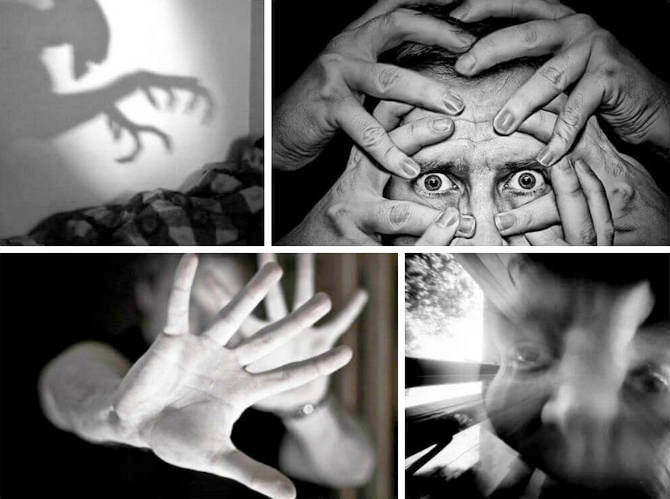
Outpatient automatisms
Manifested by automatic actions. Patients are capable of performing complex motor acts during the period of disorder: buying tickets for a bus or other transport, going to the store, etc. At the same time, when a person comes to his senses, he does not understand how he ended up in this place. This is associated with the development of complete amnesia. With outpatient automatisms, the patient is outwardly thoughtful, confused and perceived by people around him as a healthy person. Similar changes are characteristic of trance, but its duration can reach several days.
Hysterical twilight stupefaction
It has a number of clinical features:
- contact with the patient is possible, which is due to his lesser detachment from the outside world,
- in a conversation with the patient, the doctor can identify factors that provoke the development of psychosis,
- After consciousness is restored, memories are partially preserved; hypnosis sessions can completely restore them.
The duration of the state during stupefaction is from several minutes to several hours. As a rule, the duration of symptoms is individual and can vary significantly even in one patient.
Oneiroid
Oneiroid is a more severe form of clouding of consciousness. In this case, the defining feature is a dream-like delirium of fantastic content, which unfolds dramatically and leads to a violation of the patient’s level of self-awareness. Visions are perceived as if by the inner eye; they absorb almost all of a person’s attention and draw him into the illusory world.
The scenes are large-scale, fantastic, colorful and dynamic. The patient feels like a different person or being, with unusual capabilities and the ability to influence everything that happens. It is as if he controls world wars, discovers new galaxies, collects plants of extraordinary beauty, meets historical figures or even becomes them.
Unlike the oneiroid, all these vivid experiences have practically no effect on the behavior of the person in the oneiroid. He may appear distracted, lethargic, or simply freeze periodically. His movements are usually elaborate, meager, and slow. From them and from their frozen facial expressions it is almost impossible to guess the content of the visions. At the same time, it is sometimes possible to obtain simple answers to questions about the patient’s experiences and imaginary place of stay.
Such clouding of consciousness can occur in stages:
- Another controlled fantasy with an influx of images;
- Delirium of intermetamorphosis with a feeling of unreality and staging of events, false recognitions, developing into sensual delirium of fantastic content;
- Oriented oneiroid, when dream-like experiences are combined with partial orientation in the environment;
- A deep oneiroid with detachment from the real world; when leaving it, there is complete amnesia of the actual events that have occurred.
Sometimes oneiric stupefaction is diagnosed after its completion. At the same time, the patient has a detailed, vivid description of fantastic experiences combined with a paucity of memories of what is happening around him and bewilderment about the dissonance regarding the duration of the episode and his own personal identity.
Possible complications
Psychiatrists divide the negative consequences of the disorder into two groups: those associated with the primary disease and those associated with inappropriate human behavior. Twilight stupefaction can occur against the background of organic pathology, and therefore characteristic complications may include:
- With epilepsy, personality disorders develop - isolation, indifference to others. Gradually, apathy towards work and hobbies appears. This is due to organic changes in the nerve centers in the cerebral cortex, as well as side effects of long-term use of antiepileptic drugs.
- With the growth of intracerebral tumors, the neurological deficit gradually increases. Sensory disturbances, movement disorders, blurred vision, etc. may occur. With rapid growth of the tumor, there is a risk of displacement of brain structures with their pinching in the foramen magnum, which can be fatal.
The main consequence of impaired consciousness is the patient’s antisocial behavior. Due to the development of hallucinations or delusions of persecution, he poses a threat to others and himself. Attempts at suicide, aggression towards loved ones, colleagues or strangers are possible. In some cases, patients commit brutal murders without remembering anything about what they did.
Diagnostic measures
In identifying a disorder, psychiatrists rely on the clinical picture of the disorder and the testimony of loved ones, colleagues and other eyewitnesses. During twilight stupefaction, patients often commit crimes, so they undergo a forensic psychiatric examination. As a rule, it includes not only an examination by a psychiatrist, but also familiarization with the materials of the criminal case, etc.
To identify the immediate cause of the development of symptoms, a comprehensive examination is carried out:
- Conversation with the patient and his relatives.
- General examination and neurological examination. This makes it possible to detect diseases of the brain or internal organs that can cause mental disorders. It is important to establish the fact of past traumatic brain injuries, neuroinfections, as well as tumors in the structures of the central nervous system.
- Electroencephalography (EEG), computed tomography or magnetic resonance imaging. The methods make it possible to study the state of the structures of the central nervous system and identify deviations in their structure. If atherosclerosis of the cerebral arteries is suspected, an ultrasound with Doppler sonography is performed.
Only a specialist - a psychiatrist or neurologist - should interpret the results obtained. Attempts at self-diagnosis can lead to progression of the underlying disease and the development of complications.
A differential diagnosis with delirium is mandatory. An important difference is the absence of memories of the period of impaired consciousness. They may partially persist if symptoms occur against the background of hysterical psychosis. In addition, the fact of a history of epilepsy and other organic diseases of the central nervous system testifies in favor of twilight disorder. Delirium is characterized by the appearance of symptoms when quitting alcohol and psychoactive substances. Patients experience psychomotor agitation, hallucinations, pseudohallucinations and delusions of persecution.
Help during an acute period
Disorders of consciousness pose a danger to the patient and the people around him. This is due to inappropriate behavior against the background of delusions of persecution and hallucinations. In this regard, when symptoms appear, a number of simple measures should be taken to stabilize the condition.
It is necessary to call an ambulance. If possible, this should be a specialized psychiatric team capable of providing qualified treatment. While she is waiting, the patient is persuaded to sit down or lie down, and is not left alone. Sharp, piercing objects, as well as any dangerous substances, must be removed from the room. Windows and doors are closed. This helps reduce the risk of antisocial behavior.

Patients require hospitalization in a psychiatric hospital. Ambulance team specialists fix the patient and administer medicinal sedation. For this purpose, use Diazepam, Relanium, Sibazon or other drugs with a similar effect. At the beginning, a minimum therapeutic dosage is introduced, which allows you to suppress psychomotor activity. If the effect does not appear within 10-15 minutes, the administration of the drugs is repeated.
Combinations of antipsychotics with Diphenhydramine or Suprastin, as well as Aminazine, have a similar effect. When using such drugs, it is necessary to remember their hypotensive effect. These medications are contraindicated for people with low blood pressure.
In cases where symptoms of twilight stupefaction occur during epilepsy, they may be manifestations of an epileptic seizure. Therapy should include medications prescribed by a doctor to treat the underlying pathology.
Twilight state abstract
Twilight state is a disorder of consciousness characterized by the following symptoms:
- sudden onset and end of a painful condition;
- a sharp narrowing of the circle of actual ideas, thoughts and motives, a significant limitation of access to external impressions (probably the origin of the term itself is connected with this: patients perceive only a small part of the environment, just as with the onset of darkness only a little that is nearby is seen);
- deep disorientation followed by complete amnesia. But in a number of cases, elementary orientation in the environment, correct recognition of individuals, elements of self-awareness are preserved - an oriented twilight stupefaction of consciousness
- frantic excitement, when patients can commit unexpected severe aggressive actions, attacking others, destroying everything in their path. Aggression and cruelty are hallmarks of the twilight state.
In this state, outwardly correct and formally ordered, as if pre-planned behavior can also be observed; those. Outwardly, patients may seem little changed, often their activity remains consistent, which immediately makes it possible to distinguish these conditions from delirium. However, the very first question addressed to the patient or the word spoken by him shows that the patient is disoriented: he does not understand where he is, does not recognize the people around him, cannot name the date, month, year, does not remember his name and the names of people close to him. The speech of such patients is coherent, grammatically correct, but at the same time it is impossible to talk with them. They do not answer questions, they themselves do not expect an answer to their statements. They speak without addressing anyone, as if to themselves.
Twilight disturbances of consciousness occur with epilepsy, brain tumors, pathological intoxication, in the acute period of traumatic brain injury, with vascular, intoxication psychoses.
The following types of twilight stupefaction are distinguished:
1. Delusional
2. Hallucinatory
3. Dysphoric
4. Outpatient automatism (somnambulism, speech automatism, walking automatism)
5. Psychogenically caused
Delusional.
Delusional ideas predominate and delusional behavior occurs. Amnesia here is incomplete - when questioned, patients report individual details about the delusional experiences that arose during the period of disturbance of consciousness
Hallucinatory.
It is characterized by the dominance of frightening illusions, auditory and visual hallucinations, a state of hallucinatory excitement, and sometimes partial or delayed amnesia. In childhood, some types of night terrors can occur in this type.
Dysphoric.
Affective disorders prevail in the form of anger, rage, fear with relatively mild clouding of consciousness. Dromomanic tendencies may also be detected.
Clinical case (patient undergoing examination at the Serbsky Institute):
The ship's officer, while on leave on shore, behaves as usual: he walks, communicates with people, talks to them, his mood is even, but after a while it is striking to those around him that he becomes more silent, concentrated, tense, with an absent look . Nevertheless, his behavior remains correct: he cleans himself up, shaves, gets into the boat, comes ashore, but there he moves away from his comrades, which was not typical of him before. He lags behind his comrades and disappears. Later, according to witnesses, it turns out that he is wandering around the city, he is seen first at one end, then at the other. Then he enters the holiday home, hides in the back streets and suddenly attacks one of the holidaymakers and kills him. He is detained and taken to the police. There he very inconsistently reports about himself, gives his last name, confuses his age, and quickly falls into a deep sleep. When he wakes up, he remembers nothing about what happened.
An example, even more tragic, describes a patient who, in a similar state, killed her child, cut open her stomach, pulled out the entire intestines and hung it like laundry on clotheslines. Then she suddenly came to her senses and saw with horror that her child had been killed and mutilated. She didn't remember anything and wasn't able to imagine that she could have done this.
Outpatient automation.
Paroxysms of a disorder of consciousness with externally ordered behavior such as aimless and fairly prolonged wandering (automatic walking) in the absence of delusions, hallucinations, or affective disorders. Patients suffering from this disorder, having left the house for a specific purpose, suddenly and in an incomprehensible way find themselves at the other end of the city. During this unconscious journey, they mechanically cross streets, ride in public transport and give the impression of being lost in thought. Seizures of ambulatory automatism can be confined to the period of sleep - somnambulism (sleepwalking). Close to somnambulism is somnambulism - speech automatisms in a dream. In most cases, sleepwalking and sleep-talking are of a neurotic nature and are associated with dissociated sleep disorders. Unlike neurotic, epileptic sleepwalking (meaning seizures themselves; neurotic forms of somnambulism can also be observed in patients with epilepsy) are characterized by a certain (like seizures) rhythm of occurrence, develop on average much less frequently and usually out of connection with the impressions of the past day. It is impossible to awaken an epileptic somnambulist: persistent attempts to do this can contribute to the development of a convulsive attack. Paroxysms of sleepwalking are observed at a strictly defined time of the night and are reproduced in a stereotypical form. The next morning, patients feel overwhelmed, as after a regular seizure, and, as a rule, they do not remember the fact of sleepwalking. It should be noted that the difference between epileptic sleepwalking and neurotic sleepwalking has long been known: if a sleepwalker is laid out a wet rag at night in front of the door or by the bed, then the neurotic person will wake up when he steps on it, while the epileptic somnambulist will not.
Psychogenically caused.
It is characterized by the patient being switched off from the real situation and transferred to a hallucinatory situation that replaces the situation that was traumatic for him. The environment is perceived incompletely, in accordance with painful experiences. The behavior of patients is bright, expressive, maybe even demonstrative. Partial amnesia is possible, covering mostly external events. There may be psychogenic episodes of ambulatory automatism, in particular somnambulism (an example from fiction is Lady Macbeth). Hysterical twilight stupefaction is observed in reactive psychoses, as well as low-progressive schizophrenia with hysterical dissociative manifestations.
Urgent Care
.
It is necessary to provide conditions that prevent the possibility of an accident. When using means of restraint, it should be remembered that an excited patient, if he has armed himself with any weapon (pieces of furniture, etc.), should be approached by several people from different sides at the same time, holding mattresses, pillows, blankets in front of him. Approaching the patient closely, their limbs are fixed. Then the patient is placed on the bed, medications are administered and held until the end of the attack, if it is short-term, or until evacuation to a psychiatric hospital.
When excited, aminazine or tizercin is prescribed, 2-3 ml of a 2.5% solution intramuscularly (repeated administrations are possible). A fairly quick calming effect is achieved by introducing 1 - 2 g of chloral hydrate and 0.1 g of caffeine into 50-60 ml of starch mucus in an enema. If the excitement is very pronounced, hexenal or sodium thiopental (0.5-0.6 g) is injected intramuscularly, preparing an ex tempore 5% solution. After some calming, an enema with chloral hydrate, sodium barbital and caffeine is used.
In more severe and protracted cases that are not amenable to the action of aminazin and tizercin, haloperidol is used intramuscularly (1 ml of a 0.5% solution 1-2 times a day). Sometimes agitation is stopped by intramuscular administration of the above doses of aminazine (tizercin) in combination with haloperidol.
The fastest sedative effect is achieved by slow intravenous administration of aminazine (up to 3 ml of a 2.5% solution of aminazine with 10-20 ml of a 40% glucose solution). It is advisable to administer intravenously or intramuscularly 10 ml of a 10% solution of calcium gluconate or intravenous administration of calcium chloride. As soon as the excitement decreases, these medications should be prescribed orally (for example, aminazine or tizercin up to 300 mg) until the twilight state is completely eliminated; in cases where the twilight state becomes protracted, complex therapy is carried out using antiepileptic drugs and antipsychotics in smaller doses.
Hospitalization is required in a psychiatric institution in all cases of twilight state.
Therapeutic principles
Antipsychotics are used as part of drug therapy. The drugs have a sedative effect, eliminate hallucinations, psychomotor agitation and other symptoms. Psychiatrists often use Aminazine and Tizercin, which have minimal side effects. If, while using antipsychotics, there is a decrease in blood pressure, Cordiamine is prescribed.
To relieve agitation, therapy is carried out according to the following scheme:
- Intramuscular administration of Haloperidol, Olanzapine, Diazepam or Aminazine. Dosages of medications are selected individually.
- With severe psychomotor agitation, intramuscular use of Midazolam at a dose of 5-10 mg is possible.
- It is possible to use anesthetics: Hexobarbital or Propofol. The drugs are prescribed intramuscularly or intravenously.
- After the excitement is removed, the form of the drugs is changed from injection to tablet. They are used until the symptoms are completely relieved.
- If the course is prolonged, neuroleptics continue to be used until they are discontinued by a psychiatrist.
In parallel, therapy is carried out for the underlying disease that caused twilight stupefaction:
- For epilepsy, antiepileptic drugs based on valproic acid are used. Patients must take them constantly, since refusal of medications leads to another relapse.
- For the negative consequences of traumatic brain injuries or neuroinfections, nootropics (Piracetam, Phenotropil) and antioxidants (Dihydroquercetin, Tocopherol) are used to improve the functioning of nerve cells and protect them from negative effects. Medicines that improve blood flow in the cerebral vessels - Cerebrolysin, Actovegin, etc. - have a similar effect.
During the acute period of the disorder, the patient requires hospitalization. In a psychiatric hospital, relapse is stopped and constant medical supervision is established. As trance develops, the period of disturbed consciousness may persist for several hours or days. Repeated exacerbations may develop during hospitalization.
Of the non-drug methods, the key in the treatment of twilight disorder is psychotherapy aimed at achieving stable remission and preventing relapses. Patients are offered both individual and group sessions.
Forecast
Twilight disorder of consciousness is a symptom complex that is a sign of other diseases: hysterical psychosis, epilepsy, traumatic brain injury, etc. In this regard, the prognosis is determined by the root cause of the disorder and the timeliness of medical care.
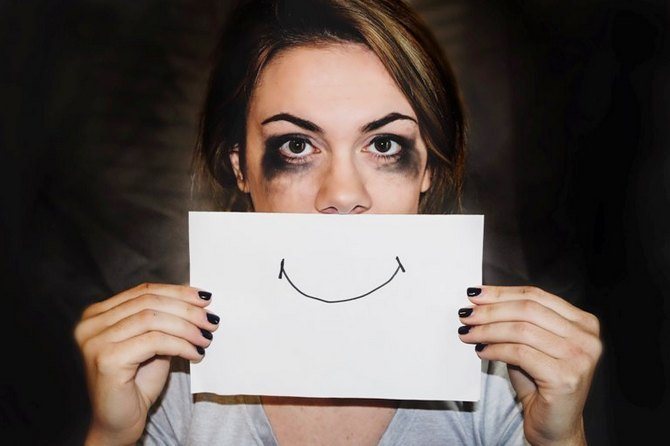
With organic brain pathology, the prognosis is favorable if it is diagnosed in the early stages and the patient is prescribed comprehensive treatment. Identification of epilepsy, manifested in the form of automatisms and other mental symptoms, is an indication for the prescription of antiepileptic drugs. When taken regularly, the attacks disappear and the patient returns to normal life.
If the patient does not seek medical help for a long time, the disorder can lead to antisocial behavior. Incomplete medical and psychological examination in a criminal case leads to judicial punishment, including long-term arrest.

